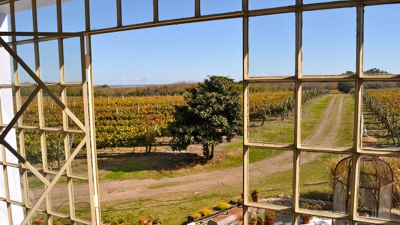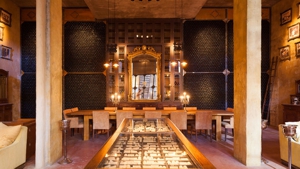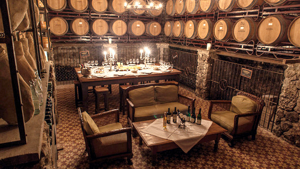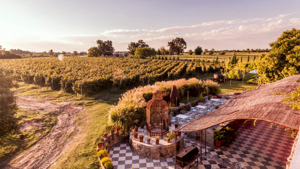Our wine cellar has an area of 50 hectares located in the hull of the original farm dating from 1909 where Juan de Narbona founded one of the first wineries in the country.Faithful to the tradition in 1990 the hull is recycled, in 1998 the planting of vineyards began and in 2010 the construction of a new wine cellar began in the original hull for exclusive manufacture of premium wines.
We also have small extensions of fruit trees coexisting with vineyards intended for the production of jams and syrups. And the production of cookies, cheeses, dry pasta and olive oil.In our cellar all senses are activated to live a unique sensory experience, tasting and smells are an essential part of our task.
VINEYARD:
Today we have about 15 hectares essentially Tannat, but
we also have Pinot Noir, Petit Verdot, Viognier y Syrah.
For us the balance is the key to success therefore constant
study of the varieties and their foliar behavior, ground
hugging, are the premises. The plants are treated as
individuals and work with low yields per hectare to achieve
our quality objectives.
HARVEST:
Harvesting is done by hand and harvest begins in early
February and runs until mid-March.
The grapes are transported to the winery in boxes of 16 kgs and makes an initial manual selection on the sorting table where those clusters that are in good health conditions are chosen and maturity. A second selection at this time is performed in grain vibratory tape to ensure the highest quality sought.After this process the grains are deposited in stainless steel tanks and French oak fuderes cooling jacket to control the temperature of the work to ferment going there for 10-15 days and skins.After alcoholic fermentation the wine is separated from the solid parts (pomace) and deposited directly into the barrels for maturation for at least 18 months before bottling. (time in barrel is decided by wine tasting and analysis).
DEVELOPMENT OF GRAPA:
We also do our own production staple and once the
process is carried marc distillation to the area where it is
the still.
In the still we get to lay up to 1000 kg of pomace. This turns on and reaches a temperature of 130 ° C.Once the pomace reaches its boiling point it begins to release alcohol in vapor form. The alembic through a coil is connected to a steel tank which continually circulates the water that makes alcohol vapor flowing through the condensing coil and obtain staple.








